
Randall Reeves’ Tasmanian Layover
After suffering brutal Southern-Ocean conditions that led to a slew of damage, Randall Reeves has made a pit stop in Tasmania, and is assessing his options for continuing the Figure 8 Voyage. "Regarding next steps, my wife Joanna arrived yesterday with some much-needed affection and a suitcase full of spare parts (don’t ask me to rank those, please), and we are talking through options over the next few days. I’ll only say that the season is now late and the decisions aren’t easy," Reeves wrote us in an email last night. (Joanna Bloor will be at the Latitude 38 booth at the Pacific Sail and Power Boat show next month.)
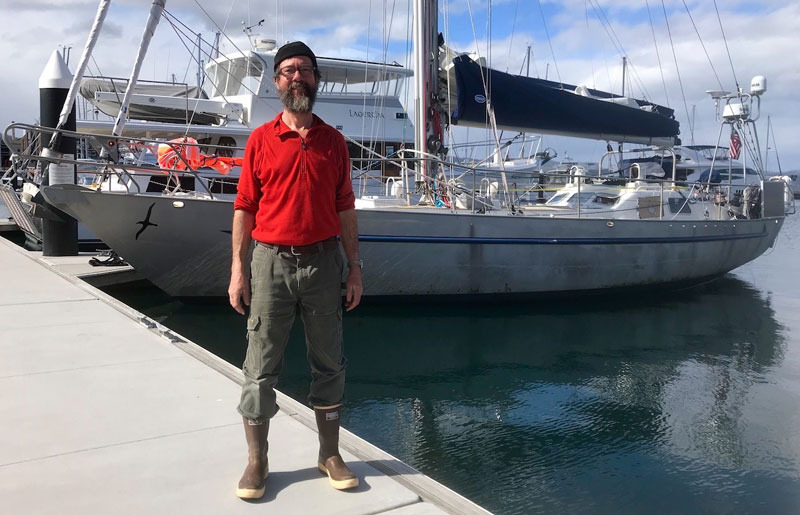
In late February, Reeves was working his way through a low pressure system somewhere near the remote Île des Pingouins in the middle of the Southern Ocean and southeast of the Cape of Good Hope. He was sailing in relatively ‘reasonable’ winds of 35 to 45 knots, but in an appalling sea state with three steep, crumbling and disparate wave trains. Reeves suffered three separate knockdowns, and sustained a shattered window, bent rail, broken solar panel and the loss of some electronics. He made his way for port that was somewhat ‘on the way’ of the Figure 8 route, which includes a circumnavigation of the Southern Ocean before heading north along the east coast of the Americas en route to the Northwest Passage.
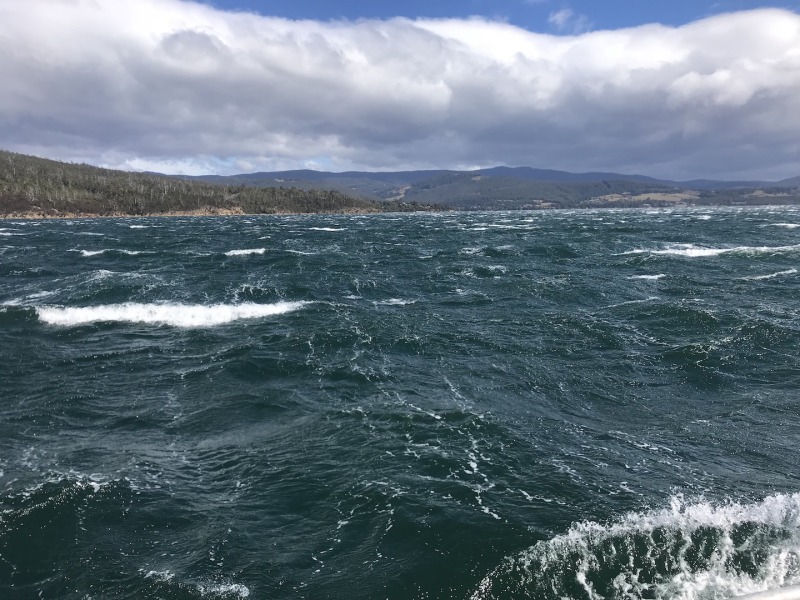
Reeves had hoped to reach Cape Horn by the end of April, before the onset of the Southern Hemisphere winter. He was running behind schedule after a delayed departure from San Francisco in October, and a pit stop in Ushuaia, Argentina, at the end of December following the loss of both his autopilot and self-steering wind vane.
Reeves said in his email that he’s landed in a good spot. "The people here, and especially at the [Royal Yacht Club of Tasmania], have been amazingly helpful. Hobart is a sailing town, and when I describe the Figure 8, I get a lot of ‘good onya, mate!’"
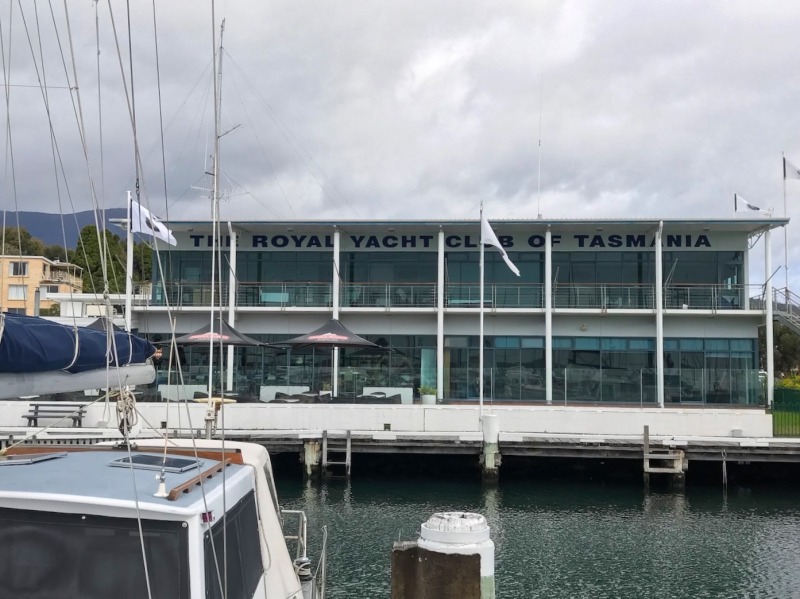
Reeves was met at the RYCT by John Solomon, the Port Captain for the Ocean Cruising Club, who, while climbing onboard, promptly told him: "That’s the second time I’ve climbed over that damned rail of yours. Did you know this yacht used to be called Taonui, and her owner, a Tony Gooch, sailed in here once after a breakdown? I helped him move the boat to the club just as we’re doing now. You’re a Yank, aren’t you? Well, that’s OK, I guess." Gooch has been an instrumental part of Reeves’ shore team.
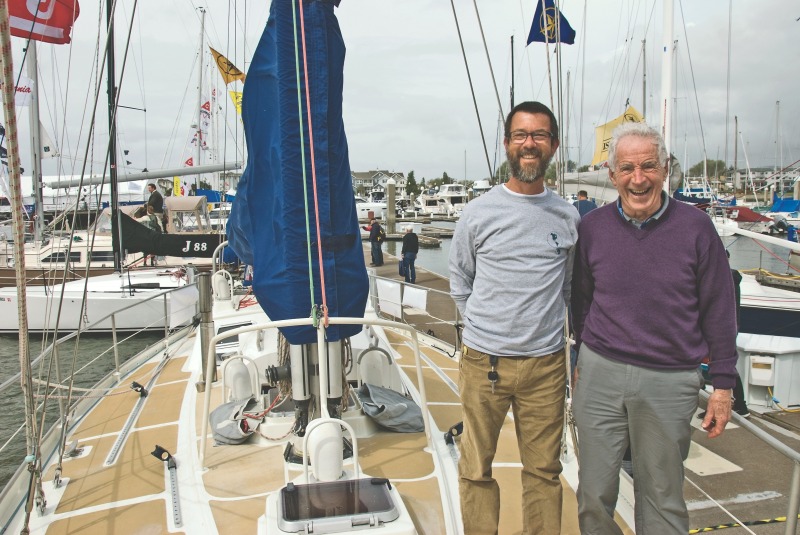
©2018Latitude 38 Media, LLC
Reeves continued: "At the club, Solomon immediately introduced me to anyone who would hold still," Reeves wrote on his blog. "’This is that Yank who’s just sailed in from Cape Horn. He started from San Francisco, a city in Southern Canada . . .’"
In the past few weeks, Reeves has been assessing the fateful knockdown that forced him to seek refuge in Hobart. "One thing that is coming home to me is just how far Mo went over during the knockdown that blew out her port window," he wrote in a March 11 blog. "This icebox lid, for example, came off. That’s no mean feat. The lid is about a foot long and a foot wide and six inches deep, and under normal circumstances, it takes two hands lifting straight up to unseat it. But I recall looking into the galley after we righted. Mostly I saw water sloshing everywhere, but there too was the icebox lid tipped up against a cupboard.
"This can only mean that for a brief moment, Mo was well past 90 degrees over, and I’m beginning to suspect that we weren’t simply slammed over by a breaker but actually were pushed off the top of a sea and fell into the trough.
In my estimation, only that kind of force could have blown out the window, leaving nothing but shards around the rim."
Reeves said in an email to us that the two high-latitude legs to Cape Horn and from the Horn to Tasmania "have been brutally difficult. I have made what I consider to be a number of heavy weather mistakes and (having survived) have learned a ton from them. I’m excited to apply what I’ve learned to what comes next."
We will continue to update you on Randall Reeves’ plans, and will bring you the full story of his somewhat harrowing approach to Hobart in the April issue of Latitude.
‘Balloon Fishing’ Challenge
As the California State Water Board knuckles down on copper loads in our waterways, the largest source and most toxic of pollutants seems to have escaped the government’s attention. Researchers have concluded that plastics are now one of the most common pollutants in our ocean waters worldwide. In addition to the long-term harm this non-biodegradable flotsam causes on Santa Monica Bay, we know that hundreds of species mistake plastics for their natural food, ingesting toxicants that cause liver and stomach abnormalities in fish and birds, and often choke them to death.
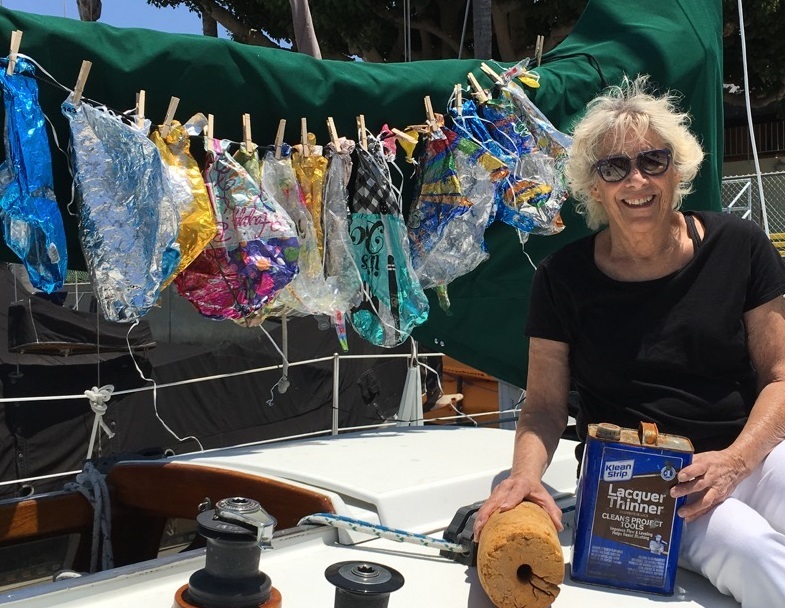
In 1990, the California State Legislature passed a feeble ‘Balloon Law’ to regulate the use of helium-filled foil balloons (in an effort to reduce the approximately 900 annual statewide power outages due to Mylar balloons). The billion-dollar per year party supply industry lobbied hard against any regulation of this litter, and you can find a plethora of shiny favors for sale daily at Ralph’s, Pavilions, and CVS in the Marina del Rey. The law merely requires merchants to post notices that helium-filled metallized balloons must be properly anchored. Even after this requirement was made law, none of the retail stores in the Marina del Rey appear to find it necessary to post the required signage.
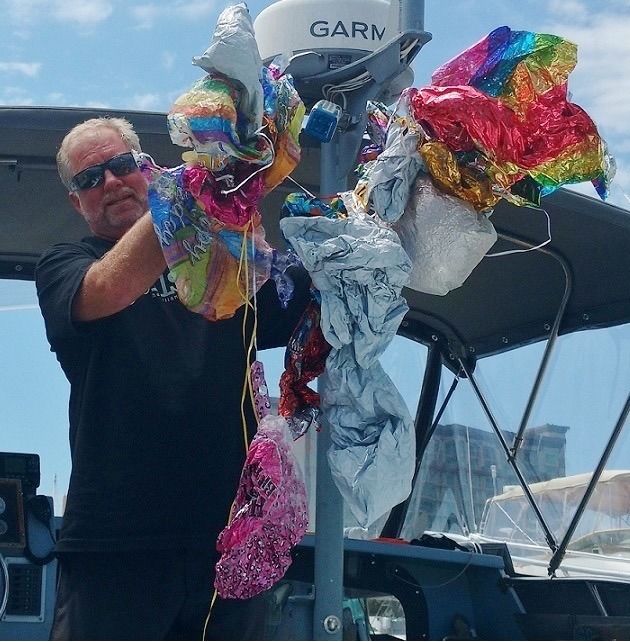
On any given weekend, you can sail Santa Monica Bay and encounter 10 or 20 collapsed Mickey Mouse heads, dancing Minions or ‘Happy Birthday’ greetings adrift on the bay. To combat this plague of indestructible Mylar trash in local waters, the boaters at California Yacht Club have launched a "Balloon Fishing Tournament." Every month in 2017 the Club awarded members presenting the most "dead balloons" a free prime rib dinner for two. The results were fabulous, with the Club’s members capturing over 100 of the plasticized foil killers. The Club is continuing the tournament in 2018 and hopes to surpass last year’s catch.
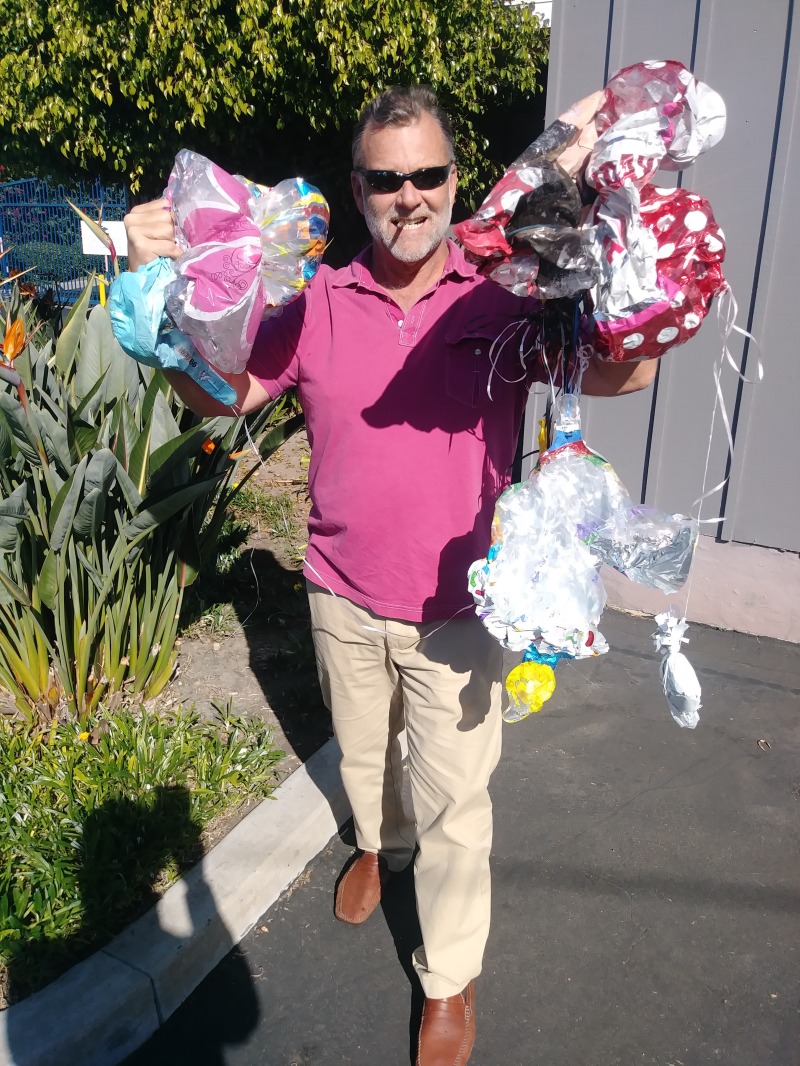
In an effort to bring this to fellow residents and state leaders’ attention, the California Yacht Club is issuing a challenge to other West Coast yacht clubs and marinas to beat the "100-balloon-per-year" record and help support the precious sea life on the California Coast. For any details of the effort, please contact the CYC Dockmaster, Evan Davis, at (310) 823-4567.
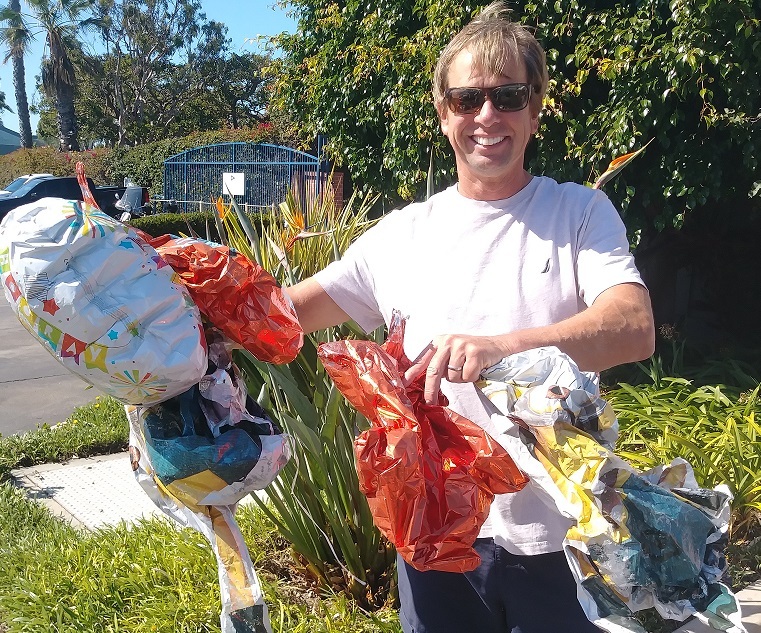
Hard to Find (What Is This Thing?)
Bob Adams of the Ericson 35 Escape wrote, "Have you seen one of these before?"
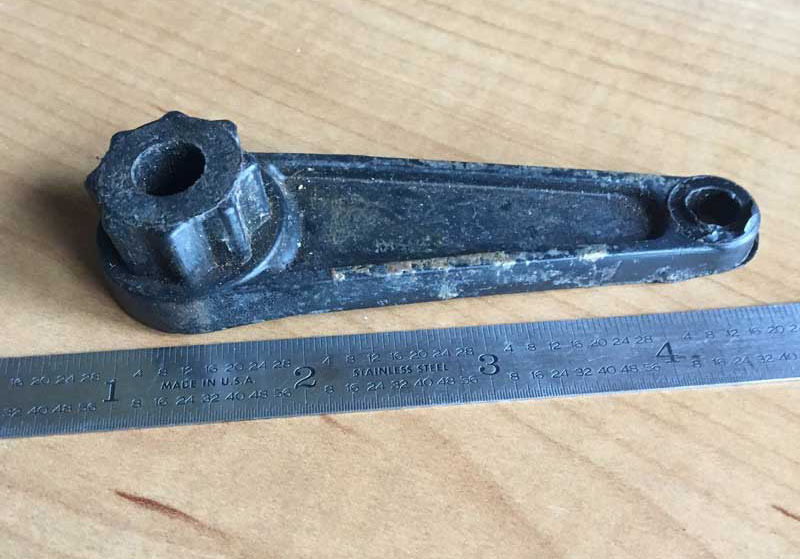
Bob, who keeps his boat at Richmond Yacht Club, explained the mystery object, "It’s a wrench that we use to disassemble our two speed winches. You insert it into the top of the winch, just like a regular winch handle, and the hole in the center allows you to access the Allen screw to remove the top. It’s been on our boat for decades and none of us know where it came from. We’d like to get a spare but I’ve checked with several chandleries and searched online, but no one has ever heard of it. Any help in finding another or even knowing what to call it would be appreciated. Thanks."
Please email us here if you can help Bob out, if you’ve got another ‘thing-a-ma-bob’ in the tool bag, or want a clever tool that would solve all the world’s problems but no one’s ever heard of.
Spring Has Sprung Loos!
On Sunday, March 18, the San Francisco J/24 Fleet 17 hosted the first in a series of race clinics. We’re hosting these by ourselves, for ourselves (and any interested crew and potential crew) because this fleet always enjoys sharing knowledge with one another, always learning and re-learning, and just hanging out.
When you go sailboat racing, the first thing you need is a boat. The J/24 is the largest production one-design keelboat class in the world and one of the most affordable one-design boats you can campaign.
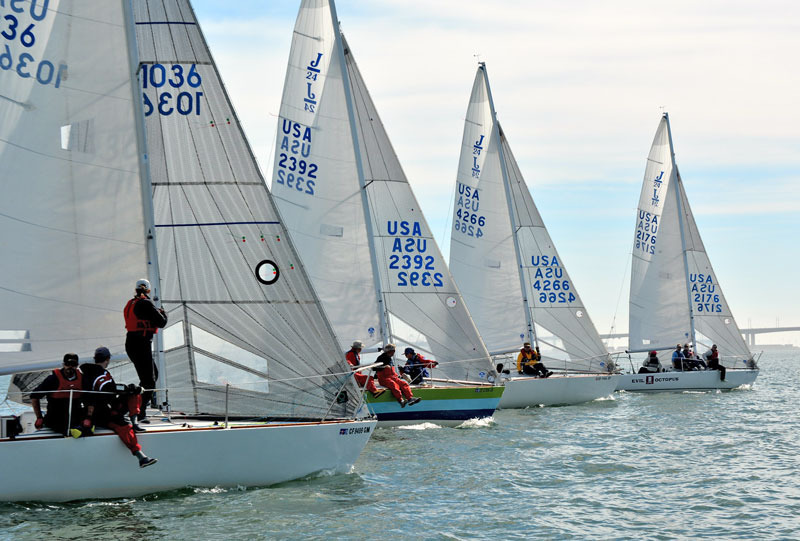
In a classroom-type setting, Jasper Van Vliet led us through the basic measurements and mechanics of the J/24, mostly discussing some universal concepts and their impact on boat speed (e.g. shroud tension, mast butt placement, keel shape/location, boat heel, and lee helm).
We then headed to the yard where we dusted off the J/24 class keel template and measurement guides to demonstrate how to measure the keel width, the J-measurement, and mast butt placement. We then plunked three boats in the water and got our shroud tensions to match up. And I can tell you that one Loos gauge’s “Base” was another gauge’s “+1”. Those springs don’t last forever.
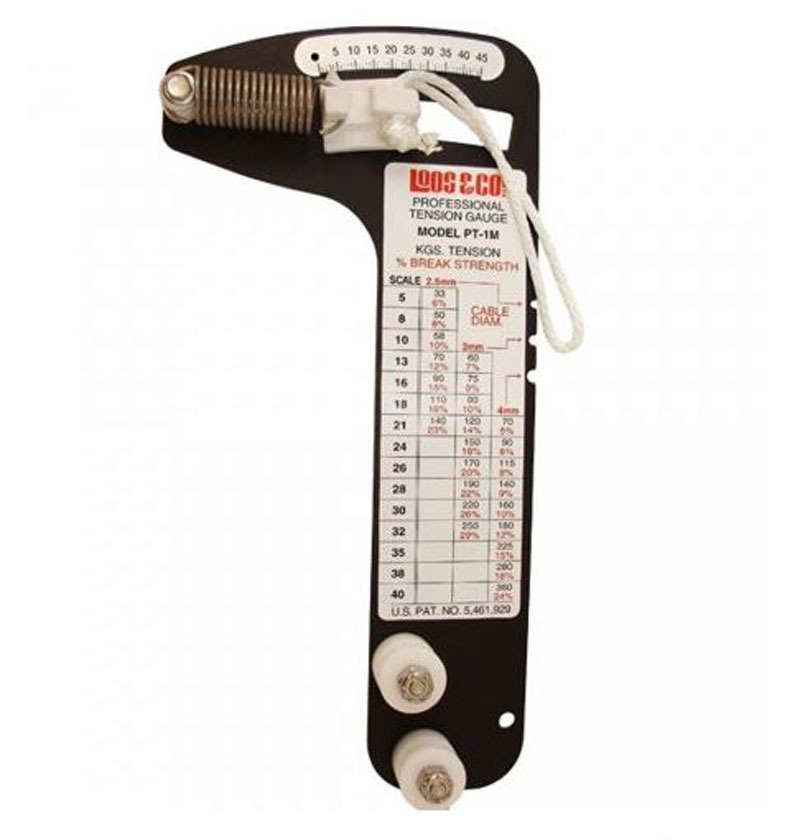
Finally some breeze came up so we could take it on the water and run tacks side by side. On starboard, one boat’s point and speed were much, much higher. We exchanged info on trim, jib car and traveler placement to try to make it all equal. Even then we still couldn’t catch him. The other tack was a very different story. It seems the shrouds were also struggling with daylight saving time — on one side they were spun forward instead of falling back! There was a massive difference between 1 below base vs. 1 above base.
Same boat, about the same crew weight, going the same direction. One-design sailing at its best. Hanging out with some of the nicest sailors we know. Priceless (and free). Next up: Starts! Clinic on April 15, 10 a.m.-5 p.m. at Richmond Yacht Club. RSVP on the fleet’s Facebook page. If you don’t have a boat, contact us. We’ll find you one.
